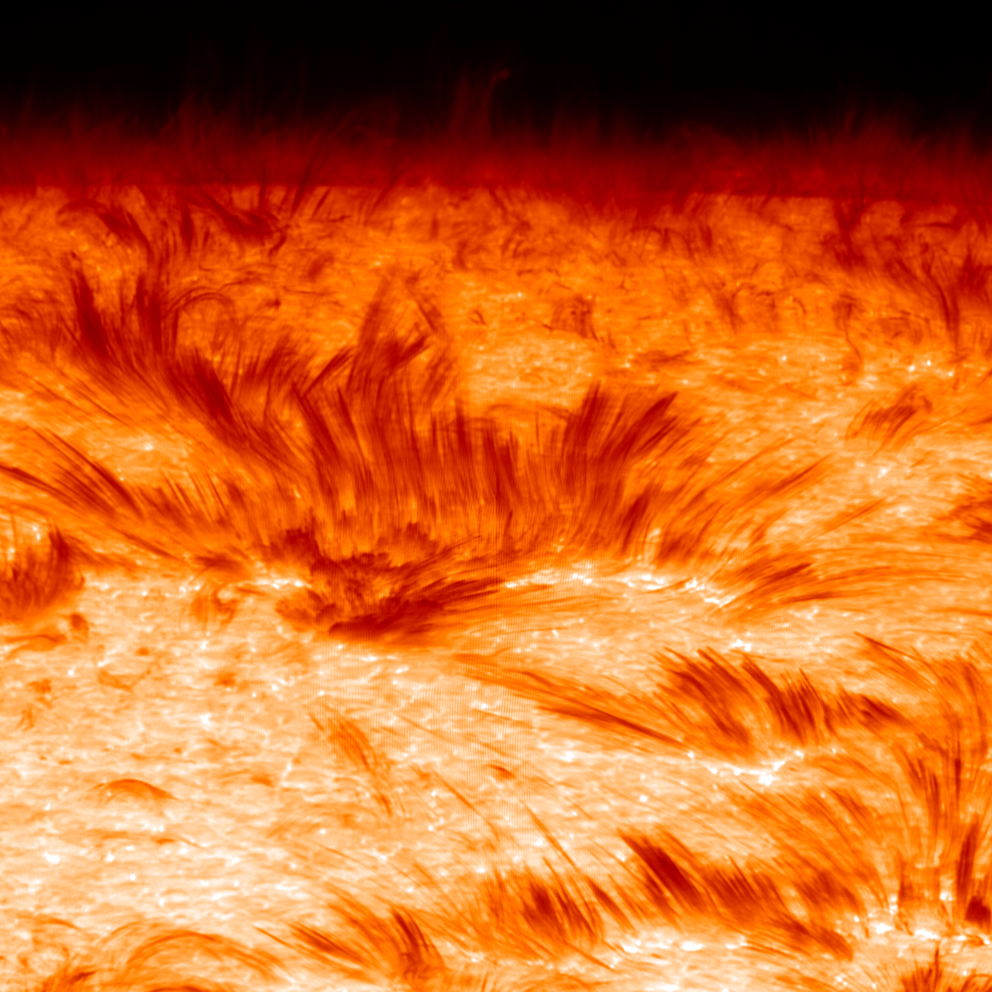
What are spicules?
Spicules are thin, elongated jets a few hundred kilometers wide. They reach up to 6000 km height and can move at speeds of more than 100 km/s. Spicules are found all over the solar surface, but can be observed most easily near the limb of the Sun. Discovered by Father Angelo Secchi in the 19th century, scientists are still debating their origin. We need the extreme capabilities of the European Solar Telescope in order to fully understand the role of spicules in the mass transport and heating of the outer solar atmosphere. The figure shows spicules close to the solar limb in the red wing of the H-alpha spectral line, as observed with the SOUP instrument at the Swedish 1-meter Solar Telescope on La Palma (Spain).

“The science of EST” is a series of short posts for social media where researchers talk in a plain language about a particular topic of their choice and how EST will improve our knowledge on that topic. The aim is to raise awareness among the general public about why solar physicists study the Sun, what the hot topics in today’s solar physics are, and how EST will leap forward our knowledge of the Sun.
All the posts can be found in "The Science of EST" (ext. link).
